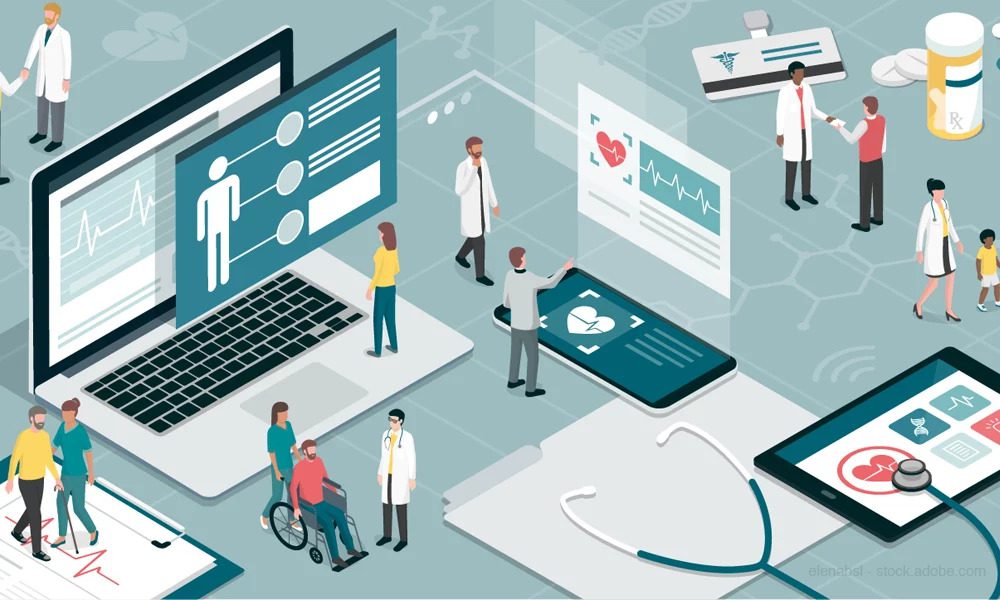Healthcare systems around the world are under immense strain as countries try to deal with the overwhelming effects of the Covid-19 pandemic, with many healthcare workers and resources being stretched to the limit. In many countries, healthcare workers have been on the frontline of the battle against Covid-19 and have paid a high price in terms of lives lost. Even now, as life slowly begins to re-establish itself, the strain on healthcare systems remains immense and the ramifications of the pandemic continue to be felt.
Meanwhile, healthcare technology has proven to be a double-edged sword in the fight against Covid-19. On the one hand, it has allowed healthcare workers to continue to provide care during the lockdown periods, with medical imaging and testing equipment enabling essential work to continue whilst social distancing became the order of the day. On the other hand, healthcare technology has also made the spread of the disease much more apparent, with medical scanners and testing equipment allowing more people to be tested and placed on the treatment route, potentially resulting in more people contracting the virus.
Whether you’re a healthcare professional or a patient, the need for essential healthcare services continues to grow as more countries start to gradually lift their lockdown restrictions.
Here we’ll explore the role of smart healthcare technology in the fight against Covid-19, touching on both the good and the bad that technology played in the pandemic.
The Good
In many countries, healthcare technology has proven to be a double-edged sword in the fight against Covid-19. Whilst the medical imaging equipment and testing kits used in the pandemic were desperately needed, particularly in the early stages of the pandemic, as more and more countries started to be affected by the pandemic, so too were the risks that came with using such equipment. In particular, as more people were tested and more people were placed on the treatment route, the number of near-misses and contracted cases increased, potentially threatening doctors and nurses who were providing essential care.
To minimize the spread of Covid-19 amongst healthcare workers, countries like Singapore and Taiwan adopted a ‘test and treat’ strategy, with people being tested for Covid-19 and those who test positive being treated immediately, potentially saving many lives. In the UK, social distancing was officially extended to include more areas and more people, with many schools closing down and places of education moving to online teaching, potentially enabling distance learning and reducing the number of close contacts between people. Unfortunately, not all countries were fortunate enough to have implemented such strategies early on in the pandemic, with many people still struggling to gain access to necessary medical testing and treatment due to a lack of available tests and treatment facilities.
The above examples highlight just some of the ways that technology enabled the more ‘normal’ re-establishment of daily life during the pandemic, with many countries now entering a phase of the recovery process where the need for medical technology is starting to reduce as restrictions on movement are being slowly lifted and more people are gaining access to health care facilities.
The Bad
Healthcare technology during the pandemic will be remembered for its role in the progression of the disease and the suffering that it caused. The most high-profile example of this was Singapore’s online national ID card, which was used to track the movement of people during the pandemic and create a ‘digital’ map detailing where the disease was present and where it had spread to. The Singaporean government’s ‘digital masterplan,’ which was launched in late March 2020, was originally intended to keep track of Covid-19 infections and monitor the effectiveness of the country’s tackling of the pandemic. The plan included using online ID cards to keep track of individuals’ movements during the pandemic and monitor “who comes in contact with whom”.
A further example of how technology was used during the pandemic to our detriment can be found in the form of contact tracing apps like TikTok Covan, which are now being used around the world to help combat the pandemic. Initially developed in China, TikTok Covan uses digital fingerprinting to link individuals to diseases, with the app’s privacy policy stating that ‘[a]s part of our commitment to patient privacy, we do not provide any information to third parties about the who, what, when and where of your interactions with this app”. In other words, with all of the fears surrounding the pandemic, our own governments and healthcare systems decided that it was time to use digital technologies to track our movements and potentially expose us to potentially life-threatening ailments. In an age of increasing global connectivity and digital tracing, it is perhaps not such a surprise that so many viruses and bacteria have developed the ability to manipulate our tech.
The spread of Covid-19 during the pandemic was made apparent due to the sheer number of tests and scanners available, with many countries initially establishing dedicated testing centers and contact tracing apps to monitor the spread of the virus and protect their populations from the dangers that the pandemic presented.
Whilst medical technology was undoubtedly needed during the pandemic to allow healthcare workers to continue providing essential care to those in need, it also presented unique risks, with countries around the world now being re-evaluated as to whether or not they still need dedicated testing and treatment facilities.
The COVID-19 pandemic will undoubtedly go down as one of the most significant events of this century, with its initial estimates suggesting that it could claim the lives of up to 100 million people. Of those, it is estimated that between 0.1% and 0.4% will be directly related to the pandemic, with medical technology playing a key role in the spread of the disease. As countries start to reopen, they will need to consider and work through the safety issues surrounding healthcare technology, particularly as there are now real fears that the pandemic may re-emerge as a threat to public health.



































